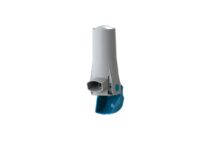The European Commission has released findings from a pilot study aimed at understanding the difficulties in ensuring secure drug supply chains. According to the commission, obtaining information on critical medical products was highlighted as a major challenge. However, significant shortcomings in the study were noted, which complicate data interpretation.
During the COVID-19 pandemic, EU member states encountered multiple instances of critical drug shortages, prompting investigations by the Commission and other stakeholders into the underlying causes and potential solutions. In December, the Commission, along with the Heads of Medicines Agencies (HMA) and the European Medicines Agency (EMA), published a list of 200 essential medicines at risk of shortages.
The Commission initiated a pilot study focusing on 11 drugs to identify factors contributing to their potential shortage. On July 10th, it released an initial technical report detailing the challenges that may lead to these shortages. The Commission hopes this data will inform discussions in forums such as the Medicine Shortages Steering Group (MSSG) or the Joint Industrial Cooperation Forum of Health Emergency Preparedness and Response Authority (HERA), and within the Critical Medicine’s Alliance (CMA).
The Commission emphasized that ensuring continuous availability of medicines is crucial in the European Health Union. It highlighted the need to strengthen the resilience of supply chains by ensuring access to essential capabilities across various levels, from sourcing raw materials and active pharmaceutical ingredients (APIs) to finished product manufacturing.
At the same time, the Commission suggested reassessing manufacturing dependencies and enhancing strategic autonomy in healthcare by considering expanding internal manufacturing capacities within the EU and fostering strategic partnerships with neighboring and like-minded countries globally.
Despite limitations in the collected data, the study revealed that Marketing Authorization Holders (MAHs) often rely on a limited number of suppliers throughout their supply chains. It highlighted economic challenges, including cost pressures, intense competition, and market instability. The report also noted that companies typically plan their manufacturing capacity over short-term (3-6 months), mid-term (2-3 years), and long-term (5-10 years) timeframes.
The report explained that for short-term production planning of generic medicines, MAHs commonly base their estimates on current sales rates. However, it was found that this approach was severely limited during significant demand fluctuations, such as those observed during and after the pandemic.
The report identified manufacturing and logistical issues as primary causes of supply chain disruptions, with regulatory challenges cited less frequently. It noted that manufacturing complexities and the economic risk associated with investing in new or modified production lines contribute to these challenges, alongside the time required for regulatory approvals.
Similarly, member state data indicated a heavy reliance on active pharmaceutical ingredients (APIs) manufactured outside the EU. Key challenges reported by member states included manufacturing issues, quality concerns, and unexpected surges in demand.
Despite these challenges, the study highlighted various measures employed by member states to address supply chain issues, such as regulatory flexibility, controlled distribution, alternative protocols, stakeholder communication, and export restrictions.
The European Commission reported that regulatory flexibility and controlled distribution measures were notably among the most frequently utilized measures. It noted that approximately 50% of member states reported granting exemptions, including allowances for foreign language packaging and the use of unlicensed medicines.




















